Ranunculus peltatus
Pond water-crowfoot (and possibly greater pond snail)
ANGIOSPERMSSPECIES SPIELS
IM
4/26/20252 min read
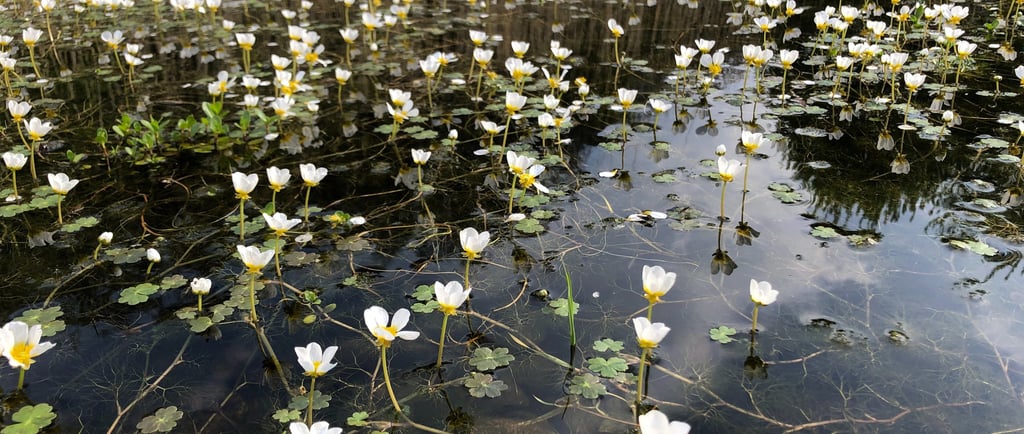

This striking flower is a member of the buttercup family, Ranunculaceae, which sort of makes sense when you see the flowers and leaf shape. A subset of the genus Ranunculus is made up of aquatic plants with white flowers, known as water-crowfoots.
Identification of water-crowfoots is a little tricky, and to work through the key in The New Flora of the British Isles (2nd Edition), you need to know a bit about the fruits (achenes) produced after pollination.
However, if we go back to the good old Collins Wild Flower guide, there are a few characteristics, which can be used to identify this species while still in flower.
The first is that the plant has two types of leaves, including long thin stringy leaves (known as capillary leaves), and lobed floating leaves which do look a little like a creeping buttercup leaf. The second is that these capillary leaves are shorter than the internodes (length of the stem between each leaf).
The next key feature is the shape of the nectar pits -what is a nectar pit? It's a little depression with raised sides the purpose of whcih is to hold nectar to attract pollinators. These are the orange-shaped depressions at the bottom of the petal, and can be crescent shaped, pear-shaped or round.
It's a little hard to see the shape here, but the depression is shaped broadly like a pear.
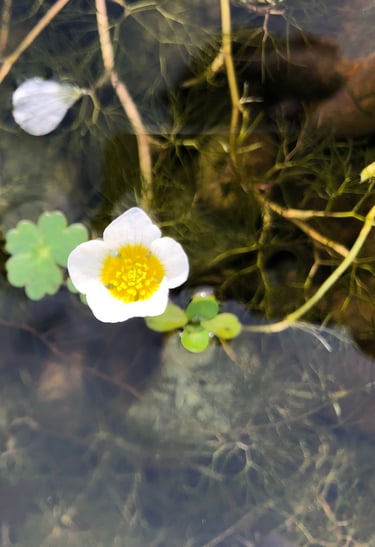

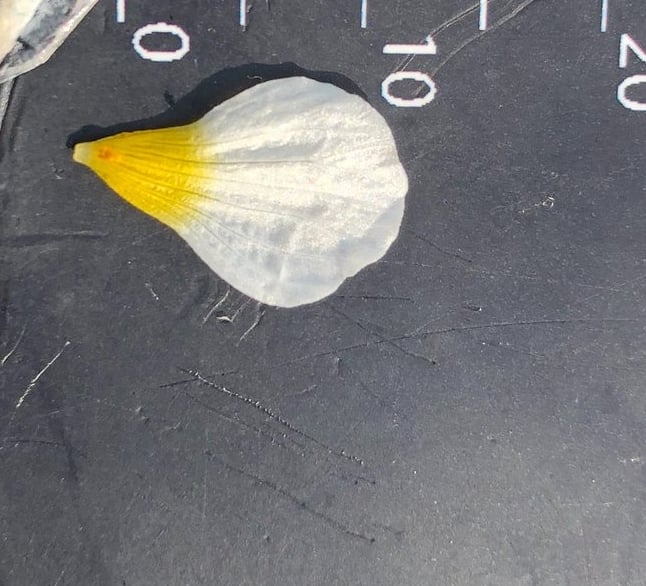

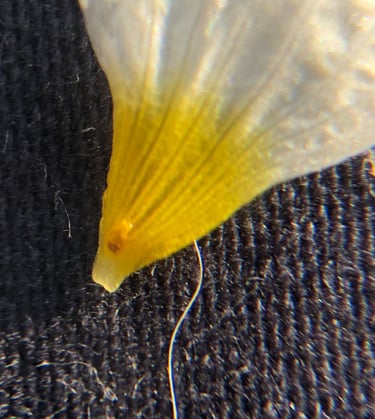

A nice simple feature is that the petals of R. peltatus are generally longer than 10mm, whereas those of common water crowfoot (R. aquatilis) are smaller. The petals of this plant are around 13-14mm.
All these features fit with the idea that what we're looking at is R. peltatus - pond water-crowfoot.
The BSBI atlas shows a few hectads where pond water crowfoot has been recorded in Argyll. This population is in a garden pond so may well have been introduced. I will try to find out.
Below is a photo of an aquatic snail feeding on this population of pond water crowfoot. I don't know much about invertebrates, but think this could be a great pond snail, Lymnaea stagnalis, which has also not been recorded a great deal in Argyll, and also may have been introduced...

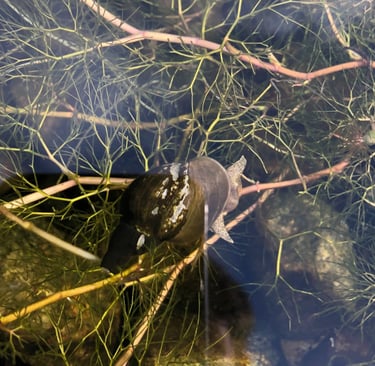
Catkin Ecology
Finding Scotland's missing habitat
CONTACT US
info@catkinecology.co.uk
+44 7918 024809
© 2025. All rights reserved.
